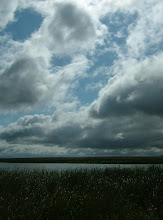The groundhog was there first. It burrowed under the shed between the footings. Our neighbor Ed offered to ‘take care of it’ for me, an offer that I suspect involved firearms and the breaking of several laws and ordinances. I declined and fenced the raised beds where I was growing vegetables. His soft brown coat was beautiful in the sunny lawn and I loved the way he moved in a flowing rolling tumble. After a few years, we noted we had not seen him in a while, concluding he must have perished. Later, one late summer morning as I was leaving for work, there in the lawn was a skunk. He was doing that thing where they dig up a divot of turf and eat the grub underneath. He was digging, munching, digging, munching, oblivious to the daylight. I ran inside for my camera, snapped a picture and moved closer, snapping again, and when I got to within 15 yards of him, he looked at me for a slow few seconds, looked up at the sky for a few more, then as if to say “Oh. Bedtime!” he turned and ambled back toward the shed. We never saw any more of him, but the hole remained open and clear of weeds for years, and he never caused any harm except to the occasional loose dog, which to my mind was ‘natural consequences’ of irresponsible dog ownership. Several years after, I was headed out to a secret sitting area in the back corner of the yard around dusk, and I became aware of movement or perhaps an unusual pattern to the sounds, so I stopped and waited. There ahead of me on the path appeared a pair of fox kits. They were playing, pouncing, nipping, rolling, wrestling like puppies or kittens or even human children. Soon, an adult appeared behind them on the path and when it noticed me, it called to them. They stopped their play, straightened up, and turned to follow the adult off into the ferns. I could follow their progress by the movement of the tips of the ferns. Later that spring, I was walking along the stepping stone path through the ferns and where I expected my foot to encounter a solid stone, I felt something springy. I parted the ferns to find . . . a severed goose wing! We later found a squirrel hide, a duck head, rabbit parts, chipmunk tails, both tame and wild goose parts, and more. We learned to patrol the yard for dismembered prey before admitting sensitive guests and to track down a smelly part and toss a shovel load of soil over it to hasten decomposition. Though the foxes were inconvenient, they were stunningly beautiful as we caught glimpses of them playing on the patios, surveying the area from the top of the woodpile, or scampering along the paths. I later read that they rarely dig their own burrows, preferring to modify those of other animals, so our hospitality to the groundhog and the skunk is what earned us the privilege of hosting the foxes!














































